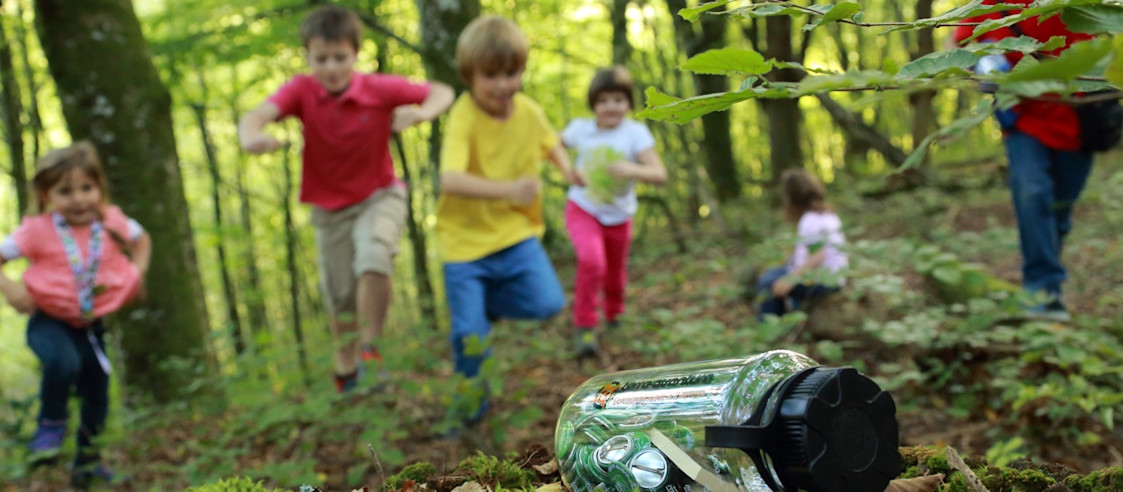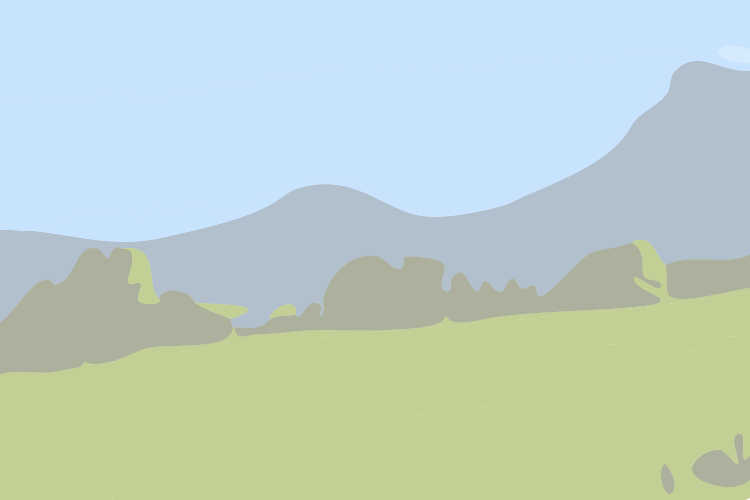IGN MAP


It's the last week of the Easter holidays, and I've decided to give my grandchildren (aged 4 and 8) and their parents, a...
Up a tree, in a gipsy caravan, a 'bubble' or a yurt... Check out our selection of unusual places to spend an...
Nouvelle-Aquitaine is full of magnificent, diversified landscapes and preserved historic built heritage sites. This...
We all have a little nostalgia for the 1950s, from the bright colours to the cane-pattern formica. Those memories bring...
Need to take a breather, let go? If you want to get away from it all, opt for the Béarn Pyrenees snow in "slow" mode....
Located in the South-West of France, discover Nouvelle-Aquitaine, the region where you never get bored! Culture, nature,...
IGN MAP

AERIAL PHOTOS / IGN

OPEN STREET MAP


The Doud's orchards grow 25 hectares of chestnut and walnut trees, as well as a few apple, fig, plum and kiwi trees, which will be producing red fruit in the next few years.

The Rose farm produces walnuts, walnut oil and, in autumn, chestnuts and marrons.
Rose's farm offers walnuts, walnut oil and chestnuts in autumn, at the farm by appointment, in Chalais, at Locobio or at the "Marché fermier" shop.

Head towards Rioux-Martin and stop at the town hall picnic area. Behind the building, gardens and a playground await you to spend a pleasant moment with your family.
As for the picnic, you can enjoy it on the grass or on the two tables at your disposal. There are also a few shady spots to avoid sunburn.

Tastefully restored former mill on four levels with a terrace and spa offering a remarkable panoramic view.
In the south of Charente-Maritime, the Haute-Saintonge offers you the opportunity to discover nature in the midst of varied landscapes: valleys and cultivated hillsides as well as wooded hills, the starting point of hiking trails where bicycles are available, not far from the spa town of Jonzac and Mysterra, the 7 labyrinths park in Montendre.
In the surrounding area, there are many ideas for visits from Royan to Bordeaux or from the Gironde estuary to the Périgord.
In order to access the mill from the car park, we can provide you with a golf cart.

L'écharpe d'Iris is a plant-based textile dyeing workshop created and run by Dorothée Elwart.
The workshop is both a place of creation and a place of transmission. Courses and workshops for the general public are scheduled throughout the year.
Dorothée is a plant dyer and founder of L'écharpe d'Iris, an 80 m2 dyeing workshop set up in the garden of the old Rioux-Martin presbytery, right next to the church.
A historian and Egyptologist with a passion for rituals, nature, the senses and colours, Dorothée likes to work from a sensory anthropology perspective, exploring plant colours through the senses and perceptions.
In this way, Dorothée makes a colourful contribution to our world's quest for a more sensitive and sacred relationship with nature.
She divides her time between creation, research and teaching.

Herbalism - Dyeing with Maud Rebière, farmer-herbalist (Les simples sauvages) and Dorothée Elwart, historian-dyer (L'écharpe d'Iris).
Principle: One day - One plant
On the programme: the history and symbolism of the plant, an intimate encounter with the plant and picking, herbalism and dyeing workshops.
Sunday 16/06: St John's Wort at the L'écharpe d'Iris workshop, Rioux-Martin (16)
Sunday 14/07: Meadowsweet at the Duellas mill, Saint-Martial d'Artenset (24)
Sunday 18/08 : Fig tree at the Lécharpe d'Iris workshop, Rioux-Martin (16)

The Romanesque church of Rioux-Martin dates back to the end of the 12th century. Initially dedicated to the Holy Trinity, in the 19th century it was dedicated to Saint Eutrope.
It has a three-tiered arcaded façade, largely inspired by that of Angoulême Cathedral.
Its impressive spire-shaped bell tower, in the Limousin style, is 13 metres high. It was exposed to lightning damage and has been repaired several times.
The monument was classified as a "Monument Historique" in 1875.

The Domaine Le Petit Cousinaud, thanks to its silty-sandy soils with resurgence of flint, produces Pineaux, Cognac and Charentais Wines in the respect of the terroir.
The Domaine du Petit Cousinaud is one of the last ten estates to use wood-fired distillation, an ancient and traditional method that requires the presence and attention of the winemaker day and night.
The estate produces red, rosé and white pineaux, as well as a wide range of red, white and rosé vins de pays charentais made from complex blends.
Production details : VS/VSOP Cognac - Pineau des Charentes red/pink/white - Vin de pays Charentais red/pink/white

This is the domain of the blue waters. To get there, you'll have to cross a succession of ascents and descents. Don't forget to bring your binoculars and cameras... There are not only humans on this territory...
Take a walk around the paths of the ponds of Guizengeard and Touvérac and get ready to have your breath taken away! These landscapes are not the result of a long process initiated by nature. They have actually been shaped by the hand of man.
These watering holes were once clay quarries (kaolin to be exact). Over time, the extraction of these deposits was reduced and nature took over. In contact with certain geological layers, the water has become acidic and nothing develops there. This is what gives it its special colour.
There are many paths and beautiful landscapes on this stretch. Hikers and nature lovers will be delighted!
Here are a few tips for walking the marked trails.
- Please respect these unspoilt areas, as many species of migratory birds nest here.
- Do not leave the marked paths.
- Keep a low profile as you pass.

Gîte set in an old barn in a hamlet.
Ground floor: vast living room with a kitchen, 2 bedrooms accessible to people with disabilities (one has a double bed, the other ona has two single beds), shower room, toilet, a second shower room has a spa for 7 persons, toilet. Upstairs: mezzanine with a sofa bed for 2 persons, 1 bedroom with 1 king-sized bed, 2 bedrooms with 2 single beds each, shower room, toilet. Cot available. Hi-fi system, Internet. Underfloor heating/cooling. Terrace, enclosed private land. Private 4 x 9m swimming pool, heated and open from May 1st to September 30th. Carport. Heating consumption to pay for in addition to the rental price. Daily housework possible. Listed as a 'Tourisme et Handicap' accomodation ('Tourism and Disabilities' label), suitable for people with motor, mental, hearing or visual disabilities, and it is possible to order a hospital bed or any other specific equipment adapted to disabilities. Hiking weekends, possibility to rent mountain bikes, piloting circuit closeby.

This independent charentaise style house is surrounded a big ground enclosed, at 500 m in the main village in a quiet landscape with a view on the countryside.
On the ground floor : living room with corner kitchen, 1 beedroom with king bed, 1 linving room with sofa bed for 2 persons , bathroom, separate toilets. On the first floor : a big bedroom with a double room and a small single bed, 1 beedroom with two smalled single beds, reading corner, shower room with toilet. There is a cot. Air conditioning in summer, internet, hifi player. Terrace, ground private enclosed of 2500m² with portico and private swimming pool (5x11m). There is car shelter. Possibility cleaning daily. Close to the accomodation : hiking, rent a bike, piloting track.

Rural commune in the southern Charente bordering Charente-Maritime

Do you like fishing for black bass in calm waters? Then head for the Etang de Piquedur in the commune of Bors-de-Baignes! Right in the middle of a wild and peaceful natural setting, you'll find a waterhole where you can fish for Black Bass in No Kill mode.
Capricious and sensitive to weather conditions, this fish is baited using modern "soft lure fishing" techniques. This avoids frightening the animal when the hook comes into contact with the water. With this trick, you should be able to catch some nice fish ...
This natural area will provide you with the rest and tranquillity you're looking for, while you enjoy a spot of sport fishing. Note that catch and release of black bass is compulsory! And don't forget to bring your fishing licence for the current year so you can reel in your fish! Fishing is only permitted from the shore from 1 January to 31 March and from 1 July to 31 December.
Finally, be discreet and respectful of this fragile environment. You may be lucky enough to spot the European pond terrapin, a small freshwater turtle protected at national and European level.

The “Panorama sur la Dronne” trail is a 12 km hike starting from the village of Saint-Quentin de Chalais.
The hilly country lanes will take you to the banks of the Dronne river, which you will skirt before returning to the village.

Located south of Charente, in the immediate vicinity of the Charente-Maritime and its estuaries, Chantillac offers a hilly and wooded landscape, typical of the forest of the Double Saintongeoise.

Garden of aromatic and medicinal plants.
Hydrolates, syrup and herbal teas.

In a hamlet in the South Charente, this fully independent gîte has been fitted out in a renovated stone house. It has large private outdoor spaces with a small wood.
Ground floor: kitchen / dining room, living room, wc, shower room. Upstairs: one bedroom with 160 bed (access by a low door), one bedroom with 2 double beds and 1 baby bed, toilet, shower room. Private enclosed land 3 ha, courtyard, enclosed garden with covered terrace (4 sun loungers), swing, wooden hut for children, bicycle storage room (4 adult bikes available). Badminton. Small dogs only, pets only have access to the ground floor. Charges to be adjusted on meter reading.

Nature has reclaimed its rights on this former kaolin quarry. The result today is a truly fascinating corner of nature, where walks are a real pleasure!
The old clay quarries at Guizengeard
Its industrial history is similar to that of the Touvérac quarries located a little further west. The oak and chestnut groves here were replaced by open-cast quarries. Kaolin, a white clay so pure and fine, was mined here for years by the AGS company before the site was sold in 2018 to the Conservatoire d'espaces naturels de Nouvelle-Aquitaine as part of the environmental compensation linked to the construction of the Sud-Europe Atlantique high-speed line (LGV SEA).
All these areas have been created by man, but for what purpose? The aim is to make the site suitable for a large number of species. The wetlands will be revegetated to create refuge areas for semi-aquatic mammals such as the amphibian vole. But this is no simple task, as industrial activity has uncovered materials that acidify the water. The pH of the water is below 3 (pH equivalent to vinegar), complicating the development of aquatic life. However, this phenomenon is reversible, and the newly-created ponds have escaped it, making it possible for the aquatic life to thrive. The resulting landscape offers unusual panoramas, alternating between open spaces and wooded areas.
Maritime pine dominates the site's woodland today, because it was planted as part of the quarry rehabilitation project in 2000. The Conservatoire is now working to restore deciduous species to their rightful place in the landscape. Successive thinning will help to achieve this goal, but patience will be required as the forest is slow to evolve.
The open spaces are mainly made up of moorland with heather and coloured gorse, sometimes alternating with grassland or wetter areas. This is why there are numerous ponds on the site, as well as areas that are flooded for only part of the year. These areas can provide breeding sites for the agile frog and the southern tree frog.